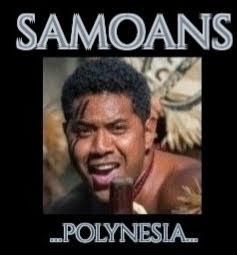Naphtali the Samoans…..
Mau was a non-violent movement for Samoan independence from colonial rule during the first half of the 20th century. Mau means ‘resolute’ or ‘resolved’ in the sense of ‘opinion’, ‘unwavering’, ‘to be decided’, or ‘testimony’; also denoting ‘firm strength’ in Samoan. The motto for the Mau were the words Samoa mo Samoa (Samoa for the Samoans). Similarly in Hawaiian Mau means to strive or persevere, and is often linked with Hawaiian poetry relating to independence and sovereignty struggles.
Tupua Tamasese Lealofi III (seated in white) with Mau leaders in front of Mau office in Vaimoso, 1929
Women of the Mau movement, who kept the Mau alive during the persecution that followed Black Saturday, circa 1930.
The movement had its beginnings on the island of Savai’i with the Mau a Pule resistance in the early 1900s with widespread support throughout the country by the late 1920s.[1] As the movement grew, leadership came under the country’s chiefly elite, the customary matai leaders entrenched in Samoan tradition and fa’a Samoa.[2] The Mau included women who supported the national organisation through leadership and organisation as well as taking part in marches. Supporters wore a Mau uniform of a navy blue lavalava with a white stripe which was later banned by the colonial administration.[3]
The Mau movement culminated on 28 December 1929 in the streets of the capital Apia, when the New Zealand military police fired on a procession who were attempting to prevent the arrest of one of their members. The day became known as Black Saturday. Up to 11 Samoans were killed, including Mau leader and one of the paramount chiefs of Samoa Tupua Tamasese Lealofi III with many others wounded. One New Zealand constable was clubbed to death by protesters following the outbreak of hostilities.[4]
The Mau movement’s efforts would ultimately result in the political independence of Samoa in 1962 but the height of the movement’s activity in the Western Islands occurred in the late 1920s and early 1930s.

